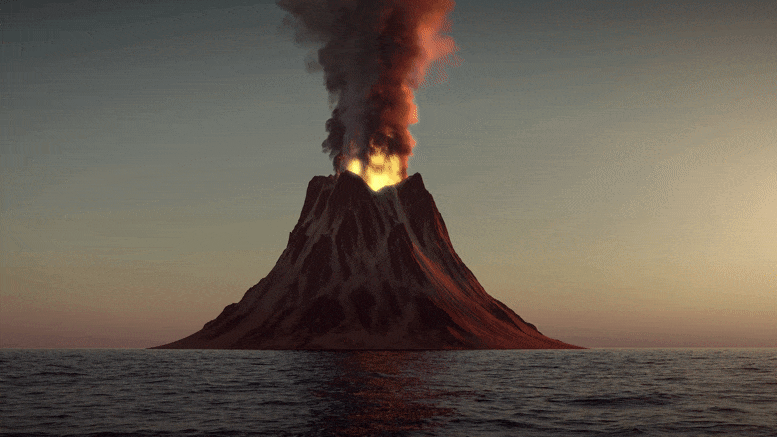While the magma supplying super-eruptions develops over long periods of time, the magma disturbs the crust and then erupts in a matter of decades.
Super-eruptions happen when enormous magma accumulations deep in the Earth’s crust, created over millions of years, travel quickly to the surface shattering pre-existing rock, according to recent research from the University of Bristol and Scottish Universities Environmental Research Centre.
An international team of scientists was able to demonstrate, using a model for crustal flow, that pre-existing plutons—bodies of intrusive rock made from solidified magma or lava—were formed over a few million years prior to four known enormous super-eruptions and that the disruption of these plutons by newly emplaced magmas occurred extremely quickly. While the magma supplying super-eruptions takes place over a prolonged period of time, the magma disrupts the crust and then erupts in just a few decades.
The research, which was recently published in the journal Nature, explains these stark differences in time intervals for magma generation and eruption by the flow of hot, solid crust in response to the ascent of the magma, which explains both the rarity of these eruptions and their enormous volume.
Professor Steve Sparks of Bristol’s School of Earth Sciences explained: “The longevity of plutonic and related volcanic systems contrasts with short timescales to assemble shallow magma chambers prior to large-magnitude eruptions of molten rock.
Crystals formed from earlier magma pulses, entrained within erupting magmas are stored at temperatures near or below the solidus for long periods prior to eruption and commonly have a very short residence in host magmas for just decades or less.”
This study casts doubt on the interpretation of prolonged storage of old crystals at temperatures high enough for some molten rocks to be present and indicates the crystals derived from previously emplaced and completely solidified plutons (granites).
Scientists have known that volcanic super-eruptions eject crystals derived from older rocks. However, before this, they were widely thought to have originated in hot environments above the melting points of rock. Previous studies that show the magma chambers for super-eruptions form very rapidly but there was no convincing explanation for this rapid process. While modeling suggested that super-volcanic eruptions would need to be preceded by very long periods of granite pluton emplacement in the upper crust, evidence for this inference was largely lacking.
Prof Sparks added: “By studying the age and character of the tiny crystals erupted with molten rock, we can help understand how such eruptions happen. The research provides an advance in understanding the geological circumstances that enable super-eruptions to take place. This will help identify volcanoes that have the potential for future super-eruptions.”
Such eruptions are very rare and Bristol scientists estimate only one of these types of eruptions occurs on earth every 20,000 years. However such eruptions are highly destructive locally and can create global-scale severe climate change that would have catastrophic consequences.
- Karlston and aum
-

 2
2




Recommended Comments
There are no comments to display.
Join the conversation
You can post now and register later. If you have an account, sign in now to post with your account.
Note: Your post will require moderator approval before it will be visible.